Supported File Formats, Encoders and Containers
Supported File Formats
Video Files
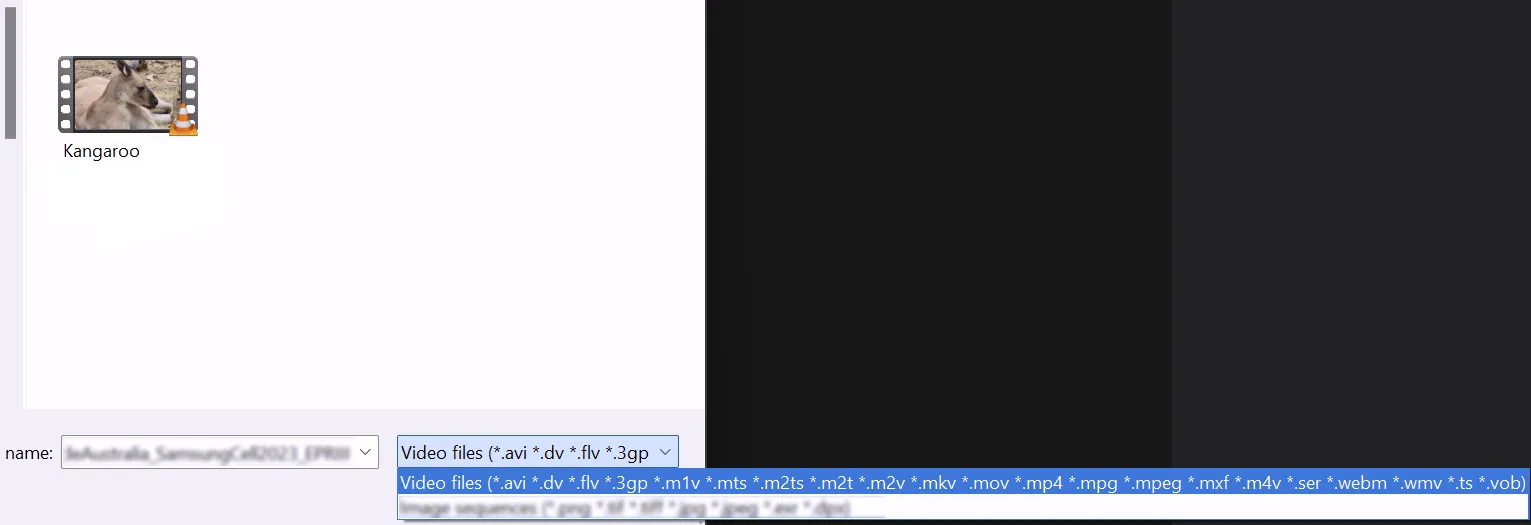
There is an ever growing list of accepted video files that can be imported into the Topaz Video AI software. These currently include:
- .avi
- .dv
- .flv
- .3gp
- .m1v
- .mts
- .m2ts
- .m2t
- .m2v
- .mkv
- .mov
- .mp4
- .mpg
- .mpeg
- .mxf
- .m4v
- .ser
- .webm
- .wmv
- .ts
- .vob
- .vr
Image Sequences

This is the list of accepted images sequence files that can be imported into Video AI. When importing image sequences, the app requires a minimum of 5 frames that must be in consecutive order within the same folder. The image file types include:
- .png
- .tif
- .tiff
- .jpg
- .jpeg
- .dpx
- .exr*
*EXRs:
Topaz AI can read 16-bit and 32-bit RGBA EXR frames. To process EXR data, Video AI will create temporary 16-bit .tiff files -- 32-bit EXR will not retain full color information when imported.
Encoders and Containers
Learn about the different encoders and containers that Topaz Video AI offers.
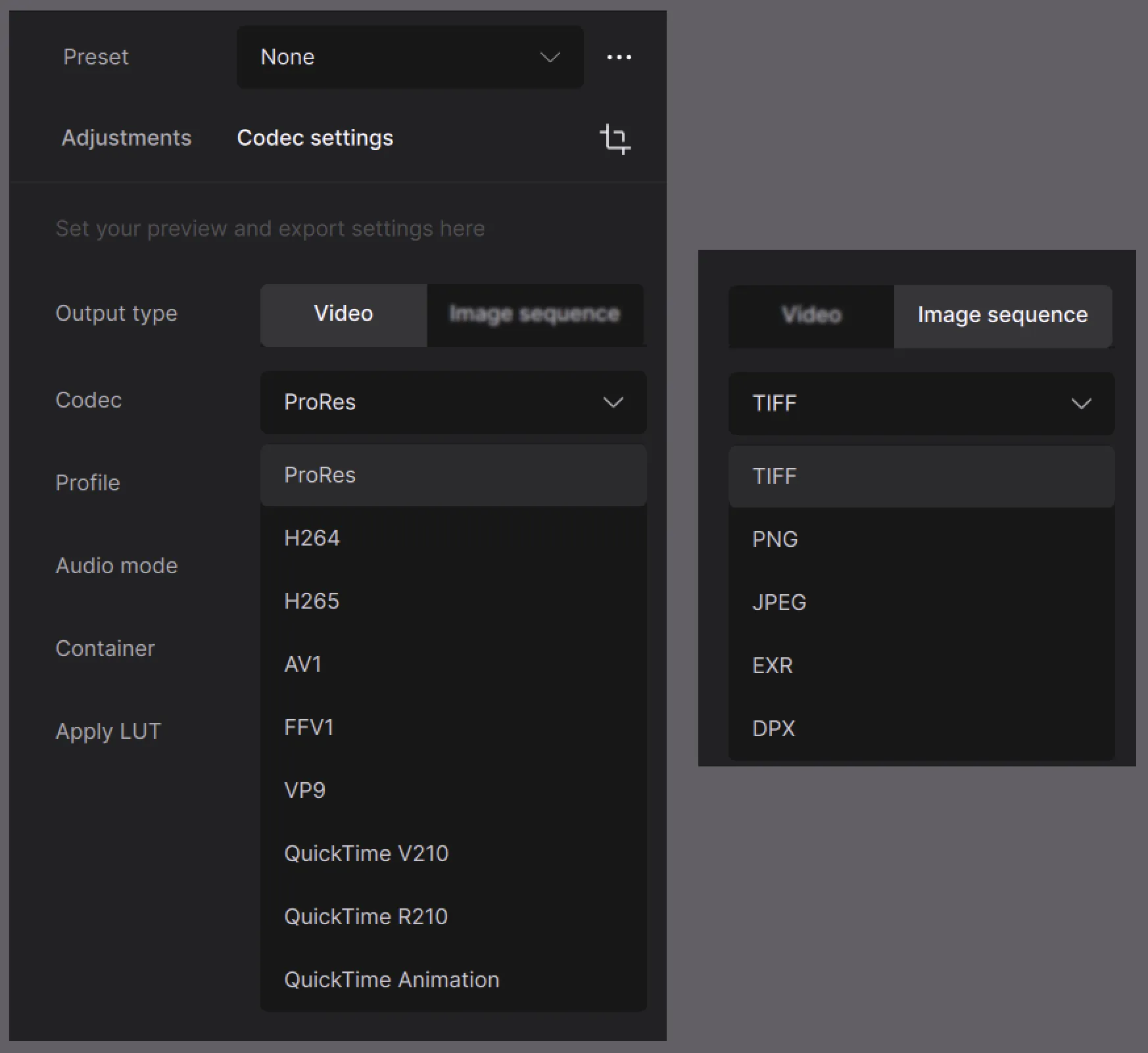
The Encoders
Choose from Topaz Video AI's 14 encoders.
- ProRes 422 Proxy
- ProRes 422 LT
- ProRes 422 Standard
- ProRes 422 HQ
- ProRes 4444 XQ *Mac only
- H264 High
- H265 High *Windows only
- H265 Main
- H265 Main10
- VP9 Good
- VP9 Best
- AV1 8/10-bit *Windows only
- FFV1 4:2:0 8/10/12-bit
- FFV1 4:2:2 8/10/12-bit
- FFV1 4:4:4 8/10/12-bit
- TIFF Lossless 8/16-bit
- PNG 8/16-bit
- JPEG 8bit
- EXR
- DPX
- QuickTime V210 Uncompressed YUV 10-bit 4:2:2
- QuickTime R210 Uncompressed RGB 10-bit
- QuickTime Animation Run-length compressed RGB 8-bit
Codec & File Types With Alpha Output
The following Codec and File Types support Alpha Output within Topaz Video AI.
- PNG
- TIFF
- QuickTime Animation
Dynamic & Constant Bitrate Modes
Some encoding options include a Dynamic mode, which will adapt the bitrate of the output video to match the visual complexity of the scene being processed.
When available, most users should try the High or Medium setting for Dynamic mode before trying some of the constant bitrate settings.
Video Encoders
Changing the encoder selection converts information from one format to another for standardization, speed, and/or compression.
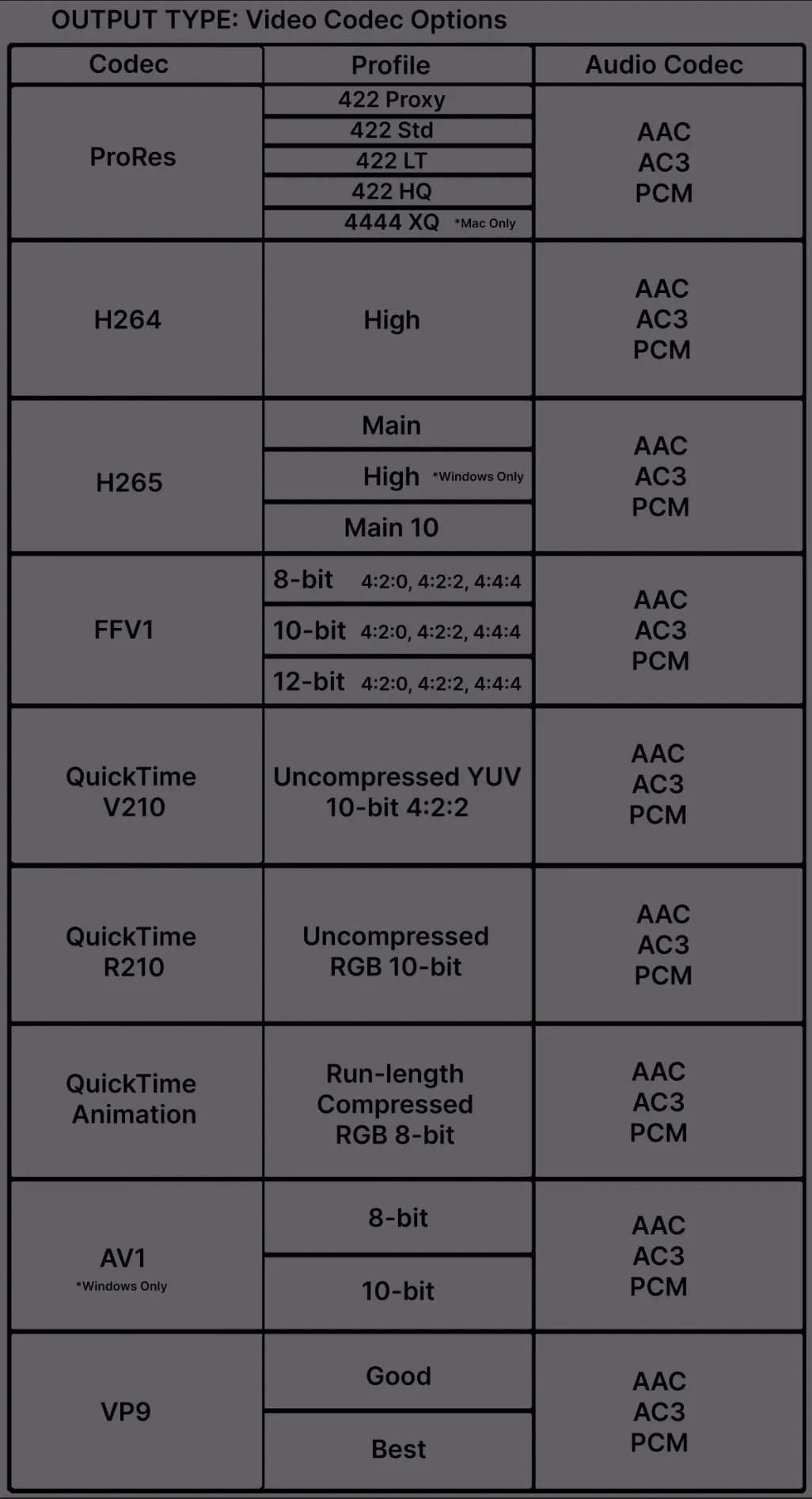
*Please note, though there are some encoders that have incredibly large maximum resolutions, Topaz Video AI is limited to 16K. Resolutions over 15360 × 8640 may not run with default settings in Video AI -- if you are working on a project that requires over 16K output resolution, please contact support for details on possible custom builds that surpass this limit.
Apple ProRes Encoders
Apple ProRes codecs take advantage of multicore processing and feature fast, reduced-resolution decoding modes. These codecs are intended for use with editing software and create large output files, especially with high-resolution videos.
- Best used with Apple machines and apps.
- 16K limit
- 120 FPS limit
ProRes 422 Proxy
- The lowest-bitrate variation of the ProRes codec, intended for use in editing software as a smaller version of larger files like ProRes HQ.
- Great for environments where storage capacity and data rate are limited.
ProRes 422 LT
- Highly compressed with roughly 70 percent of the data rate and 30 percent smaller file sizes.
- Great for environments where storage capacity and data rate are limited.
ProRes 422 Standard
- The original implementation of the ProRes codec, and the standard conversion format for Final Cut Pro X
ProRes 422 HQ
- Higher-data-rate version of Apple ProRes 422 that preserves visual quality at the same high level as Apple ProRes 4444 for 4:2:2 sources.
ProRes 4444 XQ
- The highest-quality version of Apple ProRes for 4:4:4:4 sources.
- Very high data rate to preserve the detail in high-dynamic ranges.
- Will create a large export file.
- Can be used on macOS 12.0 and later with TVAI.
- Only available on macOS.
AVC Encoders
Advanced Video Coding (AVC) is one of the most common video compression standards in use today.
H264 High
- Most common codec for web and mobile video.
- Great compression quality.
- Will create slightly larger files than H265 encoders.
- Can be played in 99.9% of web browsers, mobile devices (including the iPhone/iPad, Android), and TVs.
- Up to 4K. Max resolution of 4096x4096
- Recommended Container: MP4.
- Max 60 FPS limit
HEVC Encoders
High-Efficiency Video Encoding (HEVC) is an encoder that when compressed to the same bitrate as H.264, can offer higher-quality visual results.
HEVC makes 4K videos easier to download and stream in the best quality possible.
- 8192x4320 max resolution
- 300 FPS limit
H265 Main
- The Main profile supports 8 bits per sample.
- Supports resolutions beyond 4K. Max resolution of 8192x4320
- Recommended Container: MP4.
H265 High
- More advanced encoding setting within H265 optimized for high-detail videos
- Supports resolutions beyond 4K.
- Recommended Container: MP4.
H265 10
- The Main profile supports 10 bits per sample.
- Supports resolutions beyond 4K.
- Recommended Container: MP4.
Google VP9 Encoders
Similar to H265 when it comes to quality and compression. Recommended for embedding in webpages.
- Max supported resolution within Video AI is 8192x8192.
- VP9 max resolution of 65536x65536 is not supported at this time.
- 240 FPS limit
VP9 Good
- Recommended Container: MP4.
VP9 Best
- Recommended Container: MP4.
AV1 Encoders
Highly-efficient codec supported on NVIDIA RTX 4000 series and Intel ARC GPUs. May not play smoothly on all devices as AV1 is more system intensive than other codecs during playback.
- 8192x8192 max resolution
- 250 FPS limit within Video AI
FFV1 Encoders
Lossless compressed codec intended for use in archival workflows where large file sizes are not an issue. Supports 8, 10, and 12-bit output.
QuickTime V210
This codec is popular with high end editing and production work. This supports video and audio.
- uncompressed YUV 10-bit 4:2:2 format
- 15360x8640 max resolution
- 60 FPS limit
QuickTime R210
This profile is another popular one that is used with high end editing and production work. R210 actually uses the V210 codec as part of its profile. This supports video and audio.
- Uncompressed RGB 10-bit
- 15360x8640 max resolution
- 60 FPS limit
QuickTime Animation
This codec is best used for compressing content with large areas of flat color. It uses a lossless compression method, which means high quality and large files. This supports video and audio.
- Run-length compressed RGB 8-bit
- 15360x8640 max resolution
- 60 FPS limit
Image Sequence Encoders
You can export your video file as an image sequence. An image sequence is a set of sequentially numbered frames that can be imported to a video editing program for further editing.
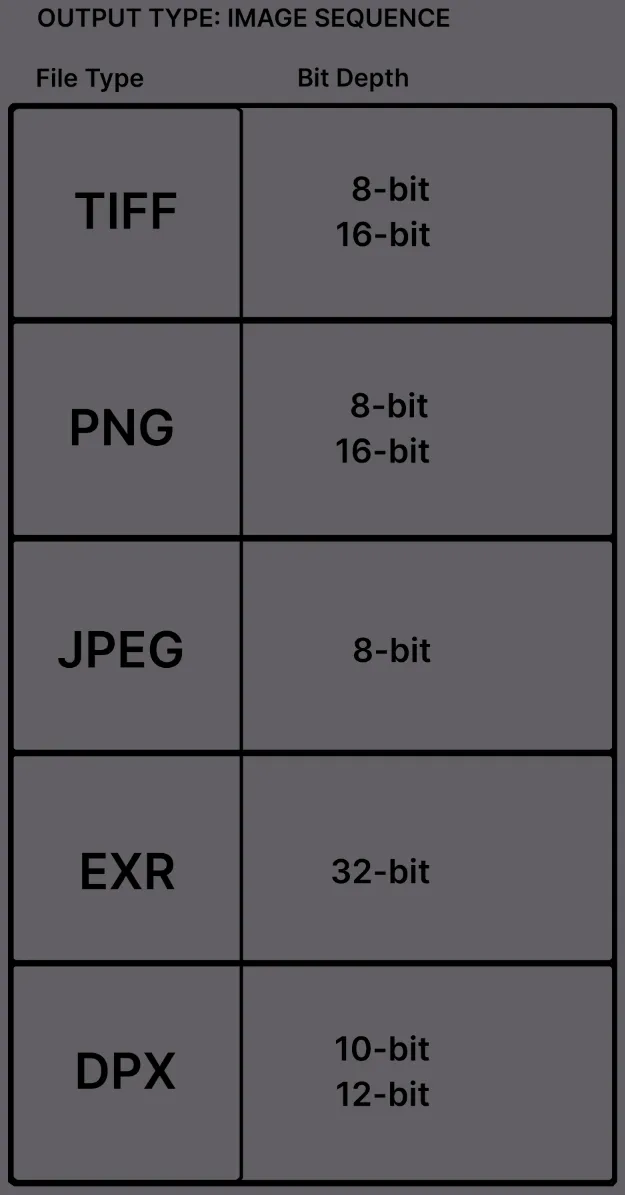
TIFF
Use TIFF when you need a high-quality sequence and have the storage space to accommodate large files.
- Lossless 8bit; 8bit output
- Lossless 16bit; 16bit output
PNG
Use PNG when you need a high-quality image sequence. One of the best-supported uncompressed formats. Uses Lossless compression to save disk space without discarding any image information.
- PNG 8bit; 8bit output
- PNG 16bit; 16bit output
JPEG
Use JPEG when quality is not a priority. Widely used format and significantly smaller that TIFF and PNG.
- JPEG 8bit; 8bit output
EXR
EXR files can withhold a high-dynamic range and multi-channels which makes these very heavy file formats. This format is commonly used in visual effects software.
- EXR 16bit; 32bit output
- EXR 32bit; 32bit output
- Currently supports RGB frames
- Additional channels from EXRs with multi-channels are not supported and will be stripped.
- Support for color outside of the legal 0-1 range works in most cases. Not recommended for footage outside of 2.
- Outside range for color will be normalized for use within the app. The full range is returned at export.
- Working in Linear color space is recommended.
DPX
This digitized file holds the density of color from a negative film scan which retains the gamma in an uncompressed logarithmic file type. This format is commonly used within visual effects software.
- DPX 10bit; 10bit output
- DPX 12bit; 12bit output
- Please note. that the DPX gets converted to a working TIFF file type within the application which then gets exported out as DPX frames.
Audio Encoders
To save the audio tracks of your video file, choose between 'Copy' and 'Convert' in the Audio section of the Output Settings panel.
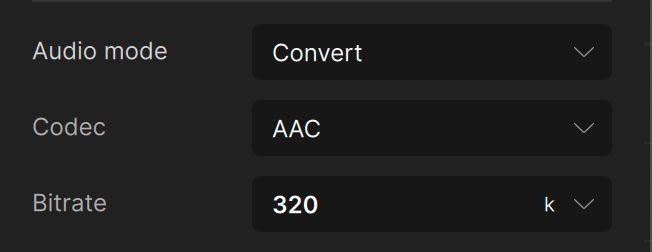
Copy mode will retain the original audio streams from the input video as long as the output container is compatible with all of the audio streams from the input.
Video AI will display a message explaining which audio codecs are conflicting with the selected container. In these cases, select 'Convert' to re-encode the audio to a compatible format.

MOV
QuickTime file format developed by Apple. Recommended for Mac users. Lower acceptance rate when working outside of Apple apps.
MP4
MPEG-4 Part 14 (MP4) is an extremely popular video format.
Used on numerous video players; VLC, Windows Media Player, etc. Will play on the majority of well-known media players.
MKV
Matroska (MKV) is an open-source container format. Supports more video and audio codec combinations that MP4 and MOV, but is not as widely compatible with different devices and operating systems. VLC Media Player is recommended for reliable MKV playback.
- If you see an "audio error" when using .mov or .mp4, .mkv will likely accept the audio stream without transcoding.
WEBM
This is a royalty free, multimedia container designed for use online. This is based of of Matroska. This is an efficient way to to upload and stream media on the internet, however it is not fully supported by older devices.
AVI
Developed by Microsoft in 1992, Audio Video Interleave (AVI) essentially refers to the synchronicity of video and audio merged into a single file container.
- Wide capability on many devices
- High Quality files, however, these tend to result in larger file sizes
File Containers
A container is a file that contains your video and audio streams. Also referred to as a file extension. Topaz Video AI offers three container options; MOV, MP4, and MKV.
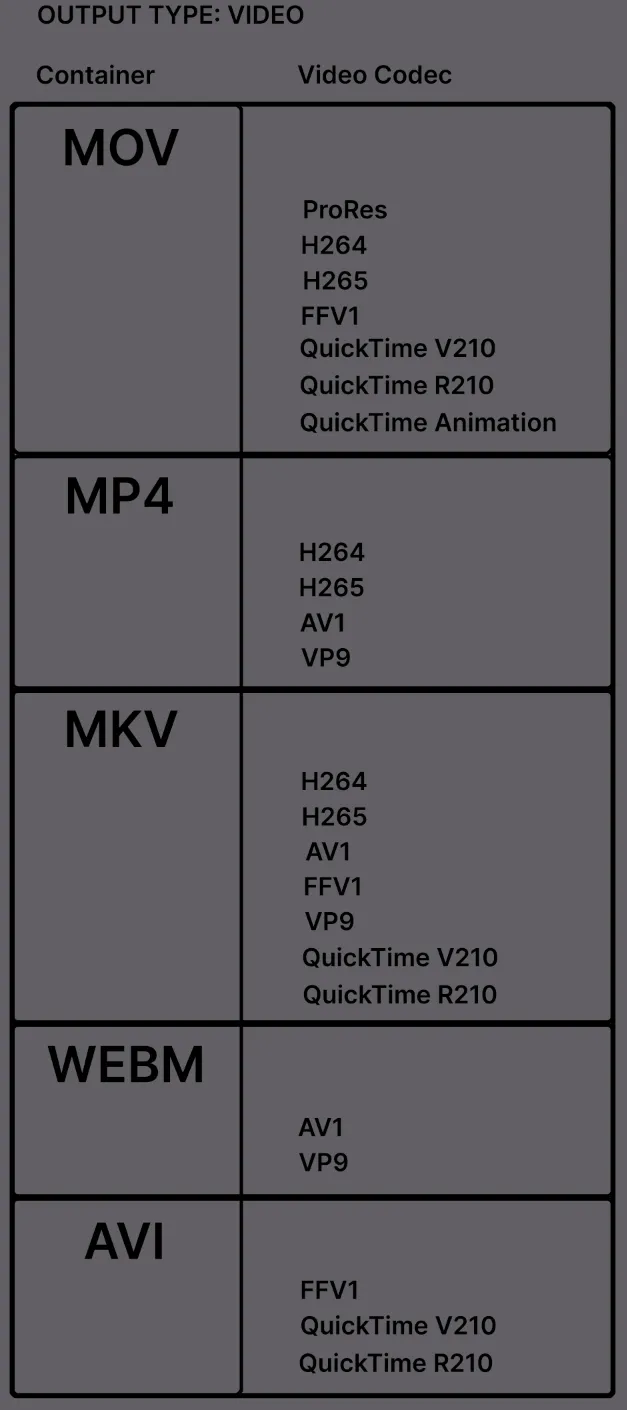
MOV
QuickTime file format developed by Apple. Recommended for Mac users. Lower acceptance rate when working outside of Apple apps.
MP4
MPEG-4 Part 14 (MP4) is an extremely popular video format.
Used on numerous video players; VLC, Windows Media Player, etc. Will play on the majority of well-known media players.
MKV
Matroska (MKV) is an open-source container format. Supports more video and audio codec combinations that MP4 and MOV, but is not as widely compatible with different devices and operating systems. VLC Media Player is recommended for reliable MKV playback.
- If you see an "audio error" when using .mov or .mp4, .mkv will likely accept the audio stream without transcoding.
WEBM
This is a royalty free, multimedia container designed for use online. This is based of of Matroska. This is an efficient way to to upload and stream media on the internet, however it is not fully supported by older devices.
AVI
Developed by Microsoft in 1992, Audio Video Interleave (AVI) essentially refers to the synchronicity of video and audio merged into a single file container.
- Wide capability on my devices
- High Quality files, however, these tend to result in larger file sizes